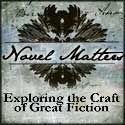But how do we construct relatable characters from the fodder of our imaginations? The answer is, of course, multi-fasciated, but found solidly in the mix is the use of archetypes.
An archetype is a psychological pattern within a person (character) that quickly conveys the status, stature, power, and even morality of a character in a way that is nearly universally understood.
Psychologist and DWM* Carl Jung brought us the term and definition of archetype in his theory of personality. But there is no need for the writer to possess a degree in psychology in order to understand and use archetypes to their advantage in fiction. What the writer truly needs is to understand literature and to be able to recognize archetypal characters in fiction. This isn’t as heady or difficult as it might first appear. To pull from the Dictionary of Biblical Imagery, archetypes are “master images that recur throughout literature and life.” A sort of psychological short hand that aids in deepening our understanding of a character and why she behaves the way she does. All it takes to is a
love of reading, and a keen eye.
So what are they? First, a clarification: Archetypes are not stereotypes. Stereotypes are negative generalizations about populations of people based on any number of outward statistics such as gender, race, skin color, ethnic origin, hair color (blonde joke anyone?), income, education level, etc.
So what are they? First, a clarification: Archetypes are not stereotypes. Stereotypes are negative generalizations about populations of people based on any number of outward statistics such as gender, race, skin color, ethnic origin, hair color (blonde joke anyone?), income, education level, etc.
Archetypes, instead, are psychological sketches of human roles which have both positive and negative attributes (Jung referred to negative attributes as “shadow”), and are understood to be neutral, rather than stereotypical. Quick take home point: Stereotype points a finger and attacks the outward appearances. Archetype explains a way of being inside a human role.
So, if you’re writing a slice of life novel about a woman born and raised in the deep south and you describe her as: An outspoken, charming, social climbing, southern woman, you’ve described her in a stereotypical fashion. If, however, you describe her as a southern woman who uses her wits and charm to build an empire, you have described her archetype (Queen).
 A surprisingly rich place to find archetypes in story is in the parables Jesus told. Some examples:
A surprisingly rich place to find archetypes in story is in the parables Jesus told. Some examples:
Wise man (e.g. Matthew 7:24-27)
Trickster (most commonly seen as a thief or enemy such as in Matthew 13: 24-30)
Father/King (There are many examples of this archetype in Jesus’ parables,
The sheep and Goats parable (Matthew 25: 31-46) turns the Father/King archetype on it’s head by depicting the King as hungry, naked, and in prison. This serves to deepen our understanding of God’s connection to humanity - that he
In the Parable of the Rich Man (Luke 12:16-21), Jesus turns this archetype on it’s head in another way, by depicting the ruler as greedy - a trait that resides in on the shadow side of the King/Father archetype, but then he adds a second, surprising dimension to the King/Father by making him a foolish man.
Jesus took the archetype of the Trickster - someone normally understood as sly, self-serving, and powerful and applied it to the religious, the Pharisees - people who would understand themselves within the role of Wise Men, or even Father.
There are, of course, many other archetypes we find in literature (and in life). Are you game? Can you point to an archetype you’ve noticed in your reading, and give us an example? All comments welcome - this isn’t a pass or fail test, we’re discussing and playing with concepts.
So, if you’re writing a slice of life novel about a woman born and raised in the deep south and you describe her as: An outspoken, charming, social climbing, southern woman, you’ve described her in a stereotypical fashion. If, however, you describe her as a southern woman who uses her wits and charm to build an empire, you have described her archetype (Queen).
 A surprisingly rich place to find archetypes in story is in the parables Jesus told. Some examples:
A surprisingly rich place to find archetypes in story is in the parables Jesus told. Some examples:Wise man (e.g. Matthew 7:24-27)
Trickster (most commonly seen as a thief or enemy such as in Matthew 13: 24-30)
Father/King (There are many examples of this archetype in Jesus’ parables,
often understood as a metaphor for God the Father. Some examples: Matthew 25:14-30 [an example of a vengeful, or angry master], and of course, The Prodigal Son parable, and also in the numerous parables about the shepherd tending the flocks [e.g. John 10:1-5].
Lover (Matthew 25:1-13 - the parable of the ten virgins)
In each of these stories, Jesus conveys immediate depth of meaning by sketching an archetype - a human role and function - and expounding on in order to teach a universal truth. He uses the universal to teach the universal. In only a few words Jesus was able to create characters each of us can readily identify and relate to.
Notice that these characters were not all sympathetic. That in no way impedes the readers ability to understand and identify with - on some level. We don’t need to like the character, we don’t need to agree with what the character is doing in order to relate to him.
An advanced technique is to take an archetype and give it a twist, giving the reader fresh, even shocking insight into human nature.
Lover (Matthew 25:1-13 - the parable of the ten virgins)
In each of these stories, Jesus conveys immediate depth of meaning by sketching an archetype - a human role and function - and expounding on in order to teach a universal truth. He uses the universal to teach the universal. In only a few words Jesus was able to create characters each of us can readily identify and relate to.
Notice that these characters were not all sympathetic. That in no way impedes the readers ability to understand and identify with - on some level. We don’t need to like the character, we don’t need to agree with what the character is doing in order to relate to him.
An advanced technique is to take an archetype and give it a twist, giving the reader fresh, even shocking insight into human nature.
The sheep and Goats parable (Matthew 25: 31-46) turns the Father/King archetype on it’s head by depicting the King as hungry, naked, and in prison. This serves to deepen our understanding of God’s connection to humanity - that he

experiences the sorrows of life on earth acutely, suffering along side us.
In the Parable of the Rich Man (Luke 12:16-21), Jesus turns this archetype on it’s head in another way, by depicting the ruler as greedy - a trait that resides in on the shadow side of the King/Father archetype, but then he adds a second, surprising dimension to the King/Father by making him a foolish man.
Jesus took the archetype of the Trickster - someone normally understood as sly, self-serving, and powerful and applied it to the religious, the Pharisees - people who would understand themselves within the role of Wise Men, or even Father.
There are, of course, many other archetypes we find in literature (and in life). Are you game? Can you point to an archetype you’ve noticed in your reading, and give us an example? All comments welcome - this isn’t a pass or fail test, we’re discussing and playing with concepts.
I bid you good writing.
* DWM Dead White Male. While the subject of archetypes is helpful in discussing fiction, it’s important to understand the foundations of modern psychology were far from universal. Psychology was founded by western and/or North American white males, and remains riddled with their prejudices to this day.









No comments:
Post a Comment